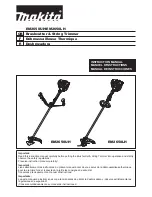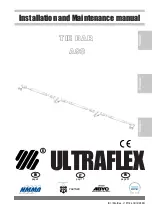
Sentinel V SC and RT Operation Manual
September
2017
EAR-Controlled Technology Subject to Restrictions Contained on the Cover Page.
Page 95
Maintenance Items and Inspection
Inspect the Sentinel V ADCP before and after each deployment to spot problems:
Item
TRDI Recommended Period
Transducer
Beams
The urethane coating is important to Sentinel V ADCP watertight integrity. Many users are not
familiar with the early signs of urethane failure. The primary damage to the urethane is from
bio-fouling and long exposure to the water and sun. Damage occurs on the surface of the
urethane and at the edge where the urethane bonds to the cups. Mishandling, chemicals,
abrasive cleaners and excessive depth pressures can also damage the transducer ceramics or
urethane coating.
Before each deployment, check the urethane coating on the transducer faces for dents,
chipping, peeling, urethane shrinkage, hairline cracks and damage that may affect watertight
integrity or transducer operation (see Figure 46).
Based on experience, TRDI knows that most systems need to have the urethane inspected
after three to five years of field use; shorter periods may be required depending on marine
growth.
O-rings
O-rings should be replaced whenever the system is opened and BEFORE they are showing any
signs of wear and tear. For example, when replacing the Sentinel V battery, the end-cap is
removed. Replace the end-cap O-ring each time the end-cap is removed.
All O-rings should be replaced every one to two years maximum.
Housing and
End Cap
Inspect for damage and replace as needed before each deployment. Thoroughly clean the
exterior of the Sentinel V ADCP after retrieval. See
for details.
After a deployment, systems need to be cleaned thoroughly before the touch sensor will
work.
Hardware
(bolts, etc.)
Check all bolts, washers and split washers for signs of corrosion before each deployment.
TRDI recommends replacement after every deployment or every year whichever is longer.
Damaged hardware should never be used.
Cables and
Connectors
Check the end-cap I/O connector for cracks or bent pins before each deployment.
Check the cable connectors for cracks or bent pins. Inspect the full length of the cable for cuts,
nicks in the insulation, and exposed conductors before each deployment.
Repair of the connectors should only be done by TRDI. The connector is made of rubber and as
a general maintenance item
TRDI recommends that the connector be replaced every five
years or whenever visible signs of wear or corrosion appear
.
Pressure
Sensor
Check that the pressure sensor is
prior to deployment.
before deployment.
This maintenance
item must be done before every deployment.
Figure 46.
Transducer View
(5-beam model shown
)
Figure 47.
End-Cap View
(Right-angle connector shown
)
















































